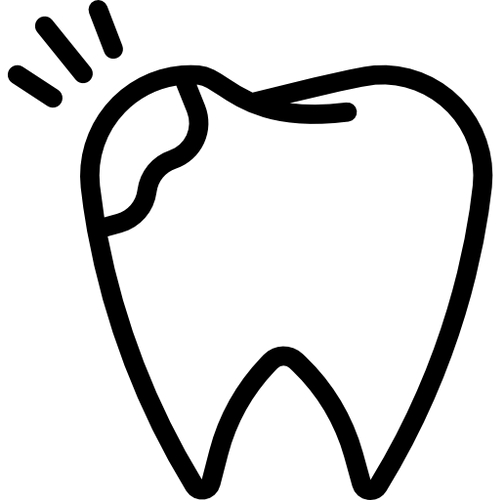DENTAL EXTRACTIONS IN TORREY HIGHLANDS
WHAT IS A TOOTH EXTRACTION?
A tooth extraction is the removal of one of your child’s baby teeth. This procedure is typically recommended after a child’s tooth becomes damaged due to an injury or severe tooth decay. If your child is set to undergo orthodontic treatment or has incoming adult teeth that need room to erupt, a tooth extraction may be the right treatment for their smile. Schedule an appointment at Sunray Pediatric Dentistry!

HOW IT WORKS: THE TOOTH EXTRACTION PROCESS
TYPES OF TOOTH EXTRACTIONS
BASIC EXTRACTIONS
Basic extractions are typically used for teeth that have been damaged by oral injuries, gum disease, or tooth decay. We will always try to save your tooth first, but sometimes extraction may be necessary.
For example, if a tooth is severely infected, it may not be possible to save it with a root canal. Instead, your dentist may recommend an extraction. Restorative treatment, like a dental implant, a dental bridge, or a partial denture, can be used to replace your missing tooth.
Often, a space maintainer (a type of intraoral appliance) may be indicated after the removal of a baby tooth to preserve the space for the permanent tooth that will erupt in this location in the future.
WISDOM TOOTH EXTRACTIONS
Wisdom teeth are the third set of molars, and are a natural part of our mouths. However, they grow in much later than the rest of our teeth, usually between the ages of 17-25. Because of this, many people do not have enough space in their mouths for wisdom teeth.
That means that the wisdom teeth can cause issues with your other teeth when they begin to erupt. They may cause your other teeth to shift and become misaligned, or they may become impacted and get infected. Wisdom teeth tend to cause discomfort, which is why most people choose to have them extracted when they begin to emerge.
IMPACTED WISDOM TOOTH EXTRACTIONS
Impacted wisdom teeth are one of the most common complications related to wisdom tooth eruption. When your wisdom tooth is “impacted,” this means that it is positioned unfavorably and is unlikely to erupt completely or at all from your gums.
Impacted wisdom teeth can also affect the position and health of the adjacent teeth, particularly if they’re growing in crooked. In addition, these partially erupted teeth can catch food debris and bacteria, leading to a higher risk of a tooth abscess or infection. Because they have not fully erupted, most impacted wisdom teeth must be removed surgically.
LOCAL ANESTHESIA
Dr. Hall will work with you and your child to decide the best options for anesthesia. If your child is especially nervous about needles, he may offer sedation methods that can help curb their fears.
LOOSENING AND REMOVING THE TOOTH
With the use of anesthetics, there should be no pain at all. It will only be felt as a bit of pressure and movement in the mouth.
CLEANING AND NECESSARY SUTURES
These sutures require no removal and should dissolve over a couple of weeks.
HAVE QUESTIONS ABOUT YOUR CHILD’S TOOTH EXTRACTION? FIND ANSWERS HERE.
There’s a Horizon of Smiles Ahead
LET’S STAY IN TOUCH
Phone
Call: (858) 215-2485
Text: (858) 282-0085
Fax: (858) 905 3385
Address
13350 Camino Del Sur
Suite 3B
San Diego, CA 92129
team@sunraypediatricdentistry.com
Hours
MON: 8:00am – 6:00pm
TUES: 8:00am – 6:00pm
WED: 8:00am – 4:00pm
THU: 8:00am – 4:30pm
FRI: 7:00am – 4:00pm








